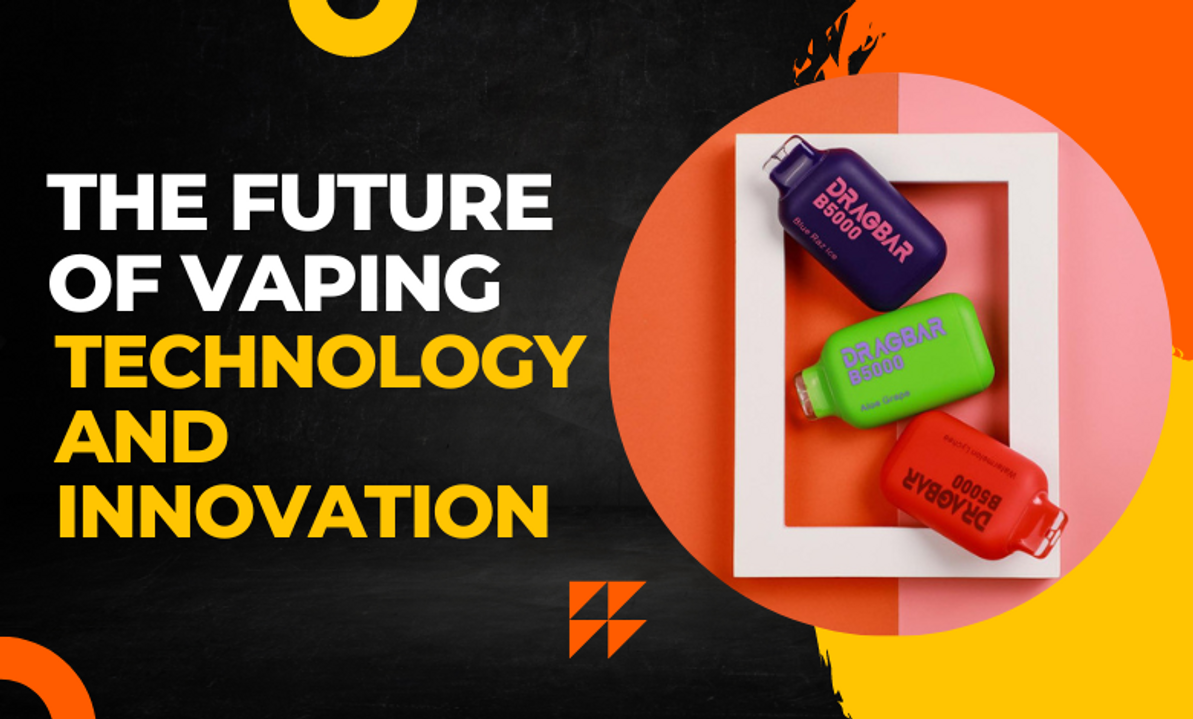Future of Vaping Technology & Innovation
Vaping technology and innovation have come a long way since the first e-cigarettes were introduced in the early 2000s. Today, there are a wide variety of vaping devices and e-liquids available, and the industry is constantly evolving to meet the needs and preferences of vapers. As such, the future of vaping technology and innovation looks bright, with new developments and advancements on the horizon. In this guide, let us take you through the future of vaping in 2023.
Advancements in Vaping Devices
One area where vaping technology and innovation is expected to make significant progress is in the development of vaping devices. Currently, vaping devices come in a variety of forms, such as cigalikes, vape pens, and mods. However, the future of vaping devices is likely to see even more diversity and specialization, with devices tailored to specific types of vapers and vaping experiences. For example, there may be devices specifically designed for people who are trying to quit smoking, or devices that are optimized for use with certain types of e-liquids.
Another area of advancement in vaping devices is in their functionality and user-friendliness. With the increasing popularity of vaping, more and more people are trying it out, including those who may not be familiar with the technology. As such, there is a growing demand for vaping devices that are easy to use and understand. This could lead to the development of devices with simpler controls, clearer instructions, and more intuitive design.
Innovations in E-Liquids
Another area where vaping technology and innovation is expected to make progress is in the development of e-liquids. Currently, e-liquids come in a wide variety of flavors and nicotine strengths. However, in the future, we may see even more diversity and specialization in e-liquids. For example, there may be e-liquids specifically designed for people who are trying to quit smoking, or e-liquids that are optimized for use with certain types of vaping devices.
Another area of innovation in e-liquids is in the use of new and alternative ingredients. Today, most e-liquids are made from a combination of propylene glycol (PG) and vegetable glycerin (VG), with flavorings and nicotine added. However, in the future, we may see the use of new ingredients, such as terpenes, which are found in the essential oils of plants, and are thought to have therapeutic properties.
Why Has Vaping Become Popular These Days?
Vaping has become increasingly popular as an alternative to smoking traditional cigarettes. One of the main reasons people choose to vape is because it is seen as a less harmful way to consume nicotine. Additionally, vaping allows for more customization and personalization, with a wide variety of e-liquids and devices available. Vaping is also seen as a more convenient and discreet way to consume nicotine as it does not produce smoke, ash, or odor. Some people also use vaping as a smoking cessation tool, as it can help reduce the number of cigarettes they smoke and eventually quit smoking altogether.
Will Vaping Without Nicotine Hurt You?
Vaping without nicotine is generally considered to be less harmful than vaping with nicotine. Nicotine is a highly addictive substance that can have negative effects on the body, particularly on the cardiovascular system. Vaping without nicotine eliminates this risk. However, it's important to note that vaping in general, regardless of whether or not it contains nicotine, is not without risks.
For example, the aerosol produced by vaping devices contains various chemicals, some of which may be harmful to the lungs and respiratory system. Additionally, vaping devices can be a fire hazard, and the use of unregulated products may expose you to harmful substances. Therefore, it's important to use vaping devices responsibly and to follow the regulations and laws concerning vaping products.
How Often Should You Vape in a Day?
The frequency of vaping depends on the individual's personal habits and preferences. Some people may only vape occasionally, while others may vape multiple times a day. However, it's important to remember that vaping is not without risks and that overuse can be harmful to your health.
Frequent vaping can lead to increased exposure to the chemicals present in e-liquids and aerosols. The inhalation of these chemicals can be harmful to the lungs and respiratory system, and may lead to symptoms such as coughing, shortness of breath, and chest pain. Additionally, frequent vaping can also lead to nicotine addiction, which can have negative effects on the body, particularly the cardiovascular system.
It's also worth noting that the World Health Organization recommends that people should not start vaping if they have never smoked. For smokers, vaping could be used as a tool to quit smoking, and it's recommended to set a quit date and gradually reduce the frequency and amount of vaping until it completely stops.
For those who are already vaping, it's important to be mindful of how often they are vaping, and to be aware of any negative effects it may be having on their health. It's a good idea to set a limit on how often you vape per day, and to stick to that limit as much as possible. It's also important to use vaping devices responsibly and to follow the regulations and laws concerning vaping products. It's also important to talk with your healthcare provider about your vaping habits and if you have any concerns about your health.
How Vaping Devices Work?
Vaping devices, also known as e-cigarettes or electronic nicotine delivery systems (ENDS), work by heating a liquid, called e-liquid or vape juice, which typically contains a mixture of propylene glycol, vegetable glycerin, flavorings, and nicotine. When the liquid is heated, it turns into a vapor that can be inhaled. The heating element in the device is called an atomizer, which is powered by a battery.
When the user inhales through the device's mouthpiece, the atomizer heats up the e-liquid, turning it into an aerosol, which is then inhaled. The aerosol is made up of tiny droplets of liquid that contain the nicotine, flavorings, and other chemicals. The user can control the amount of vapor produced by adjusting the settings on the device or by inhaling more or less forcefully.
There are different types of vaping devices available on the market, each with its own unique features. Some devices are simple and easy to use, while others are more advanced and customizable.
Cigalikes are the simplest form of vaping device, they resemble traditional cigarettes and are disposable. They are easy to use and are a good option for people who are new to vaping.
Vape pens are a more advanced form of vaping device, they are larger than cigalikes and have rechargeable batteries. They offer more options for customization and can be refilled with e-liquid.
Mods are the most advanced form of vaping device, they are larger than vape pens and offer even more options for customization. They can be used with different types of atomizers and can be adjusted to produce more or less vapor. Some mods even have built-in screens that display information such as the current battery level and the resistance of the atomizer.
It's important to note that vaping devices are not without risks and it is not safe for everyone, particularly youth and non-smokers.
Conclusion
Overall, the future of vaping technology and innovation looks bright, with new developments and advancements on the horizon. Advancements in vaping devices and innovations in e-liquids are expected to lead to even more diversity and specialization in vaping products, making vaping more accessible and appealing to a wider range of people. As the vaping industry continues to evolve, we can expect to see new and exciting developments that will shape the way we experience vaping.
It's important to note that vaping is not without risks, and it is not safe for everyone, particularly youth and non-smokers. Therefore, it's important to follow the regulations and laws of vaping products and make informed decisions about vaping.
Recent Posts
-
American Made Vapes: Guide to the Best Made in the USA Vapes
The search is over for top-quality disposable vapes that are a class apart and stand out in terms of …Sep 18th 2025 -
RifBar MixPro 40K Review: Redefines Performance
The vaping industry is moving rapidly toward customizable, high-performance disposables – and the Ri …Sep 9th 2025 -
Flum UT 50K Review: Incredible Flavor Control Feature
The Flum UT Bar Vape takes disposable vaping to an entirely new level, and VapeMoreInc is thrilled t …Aug 26th 2025





